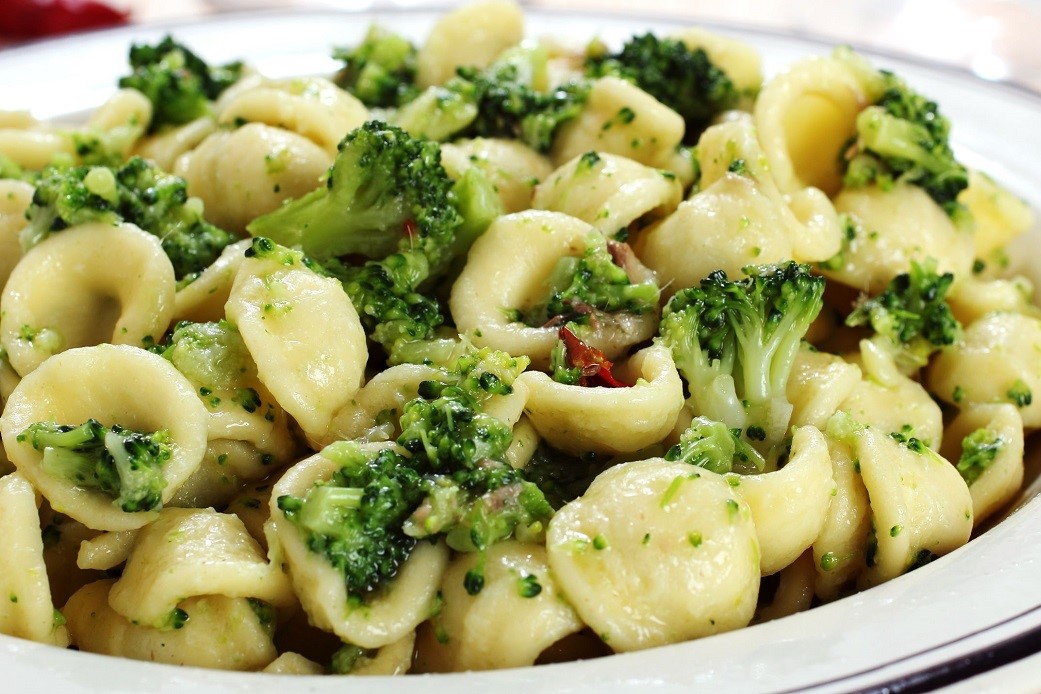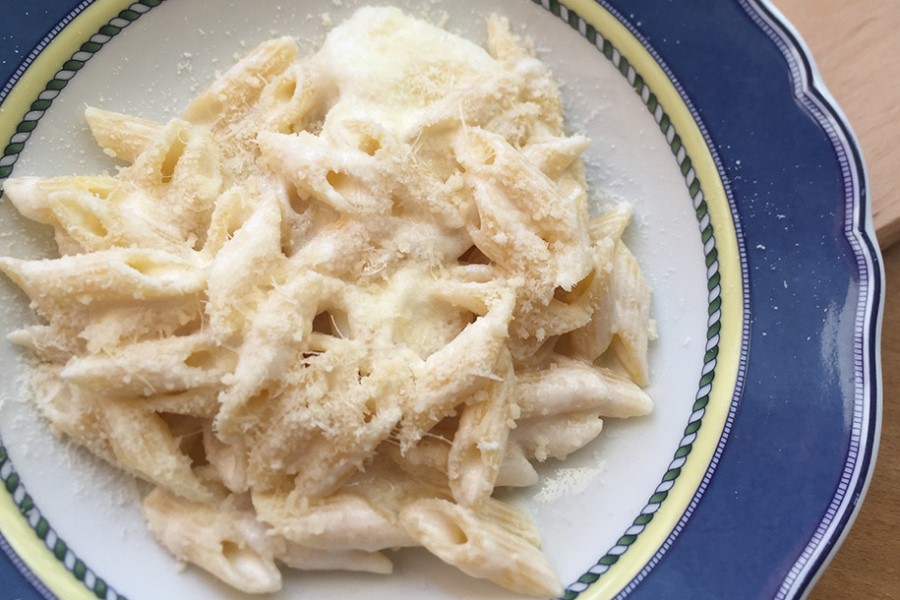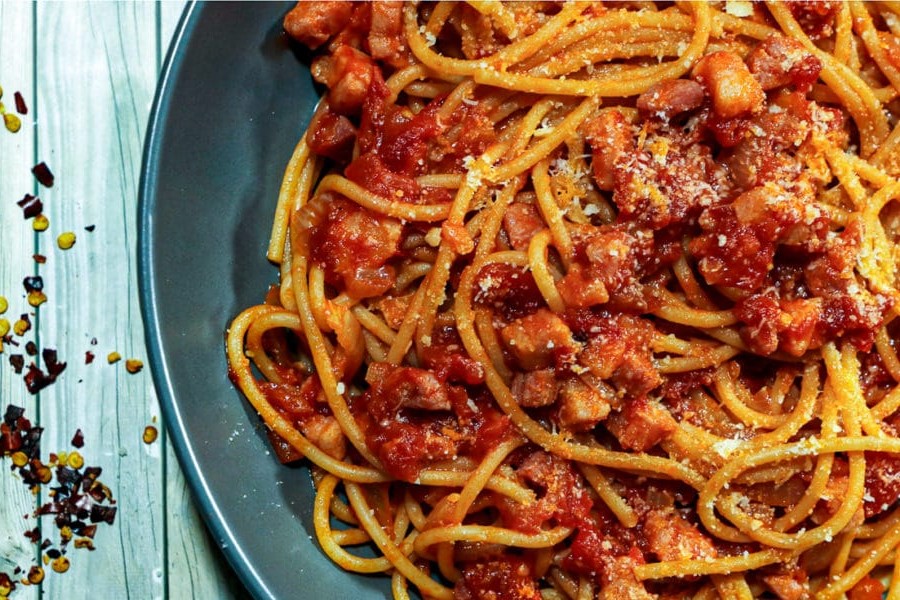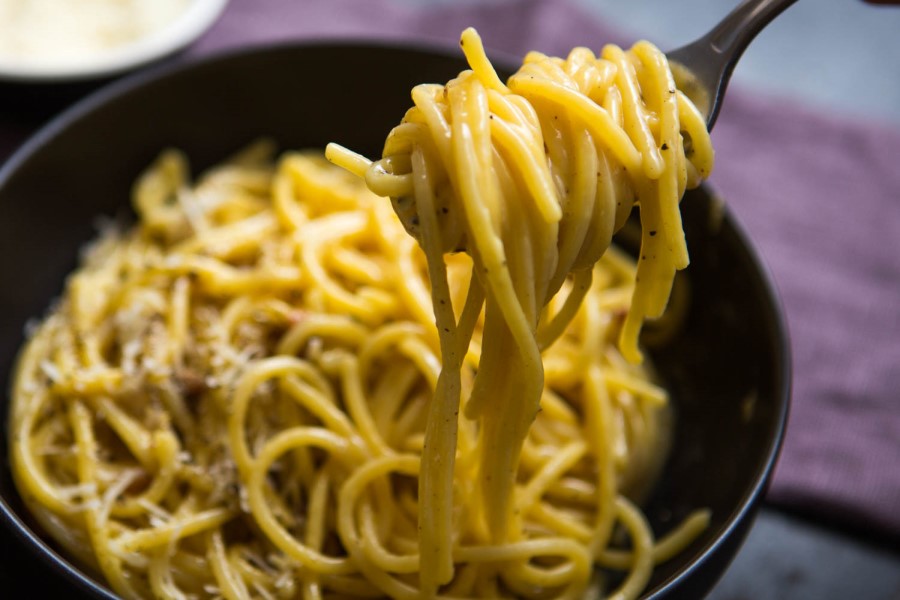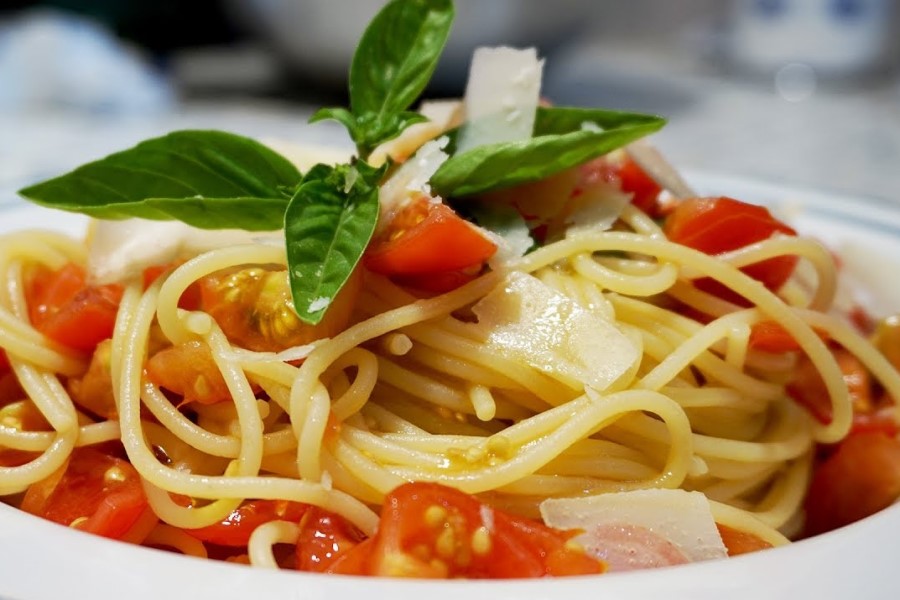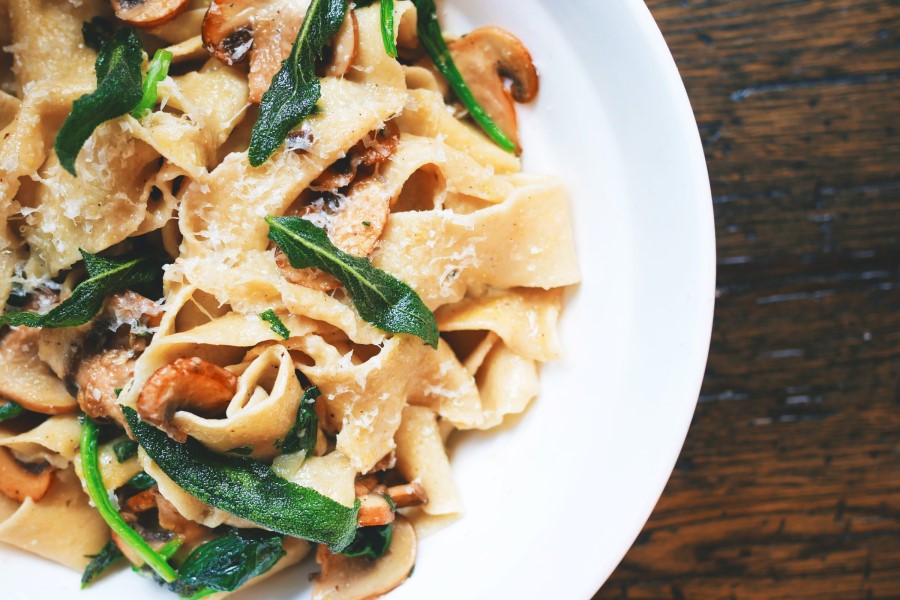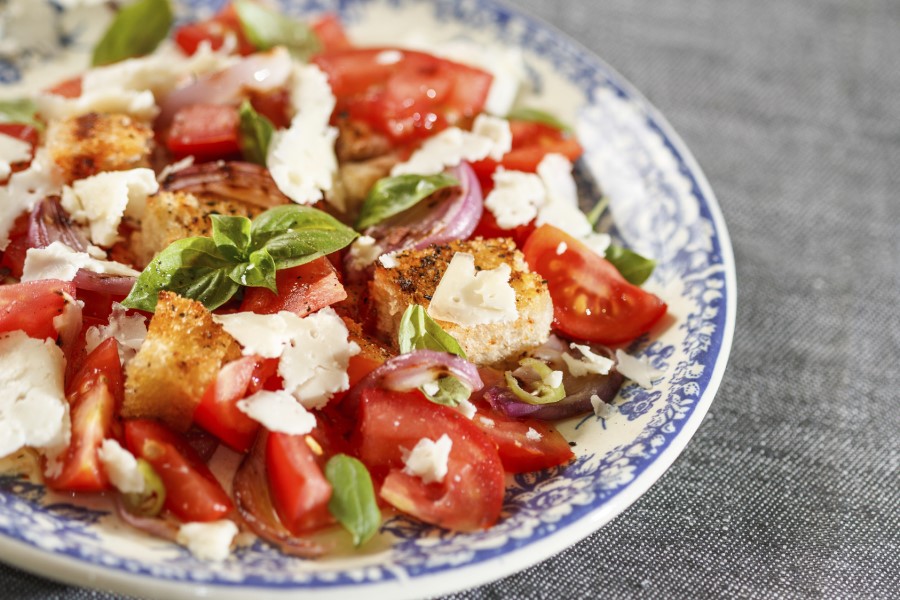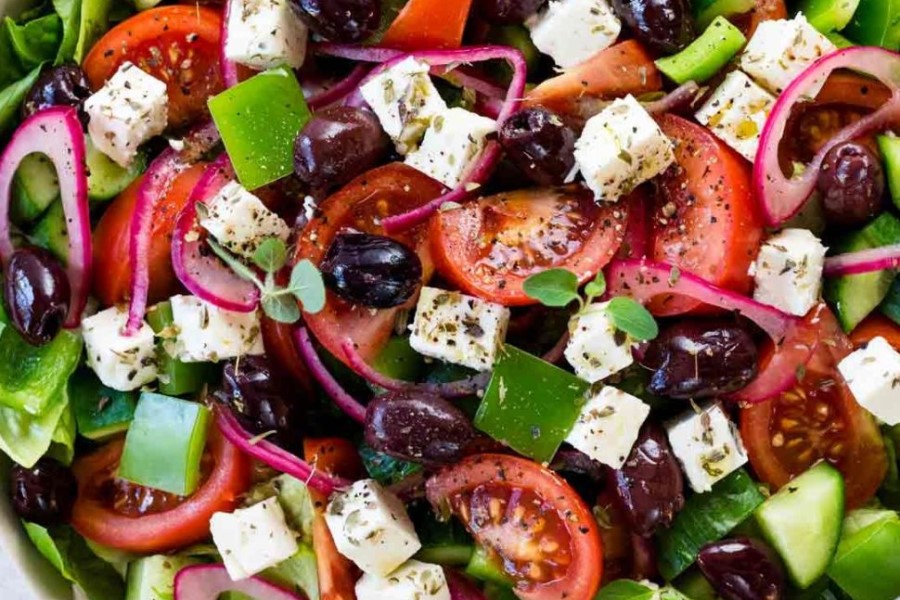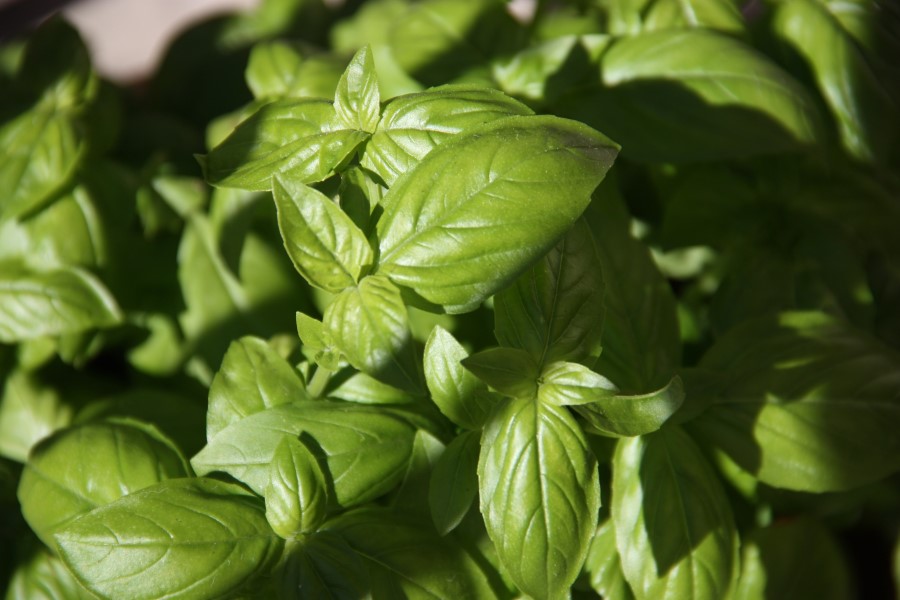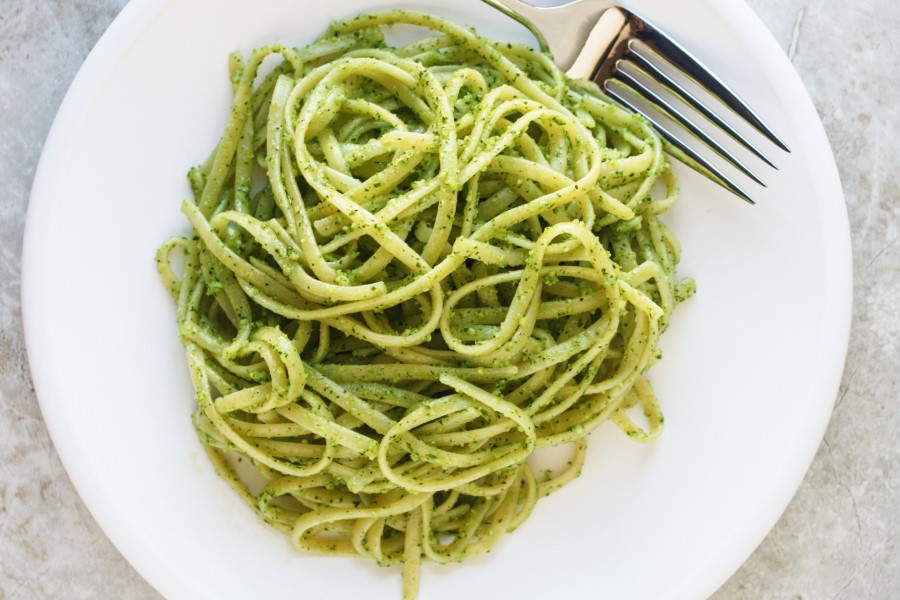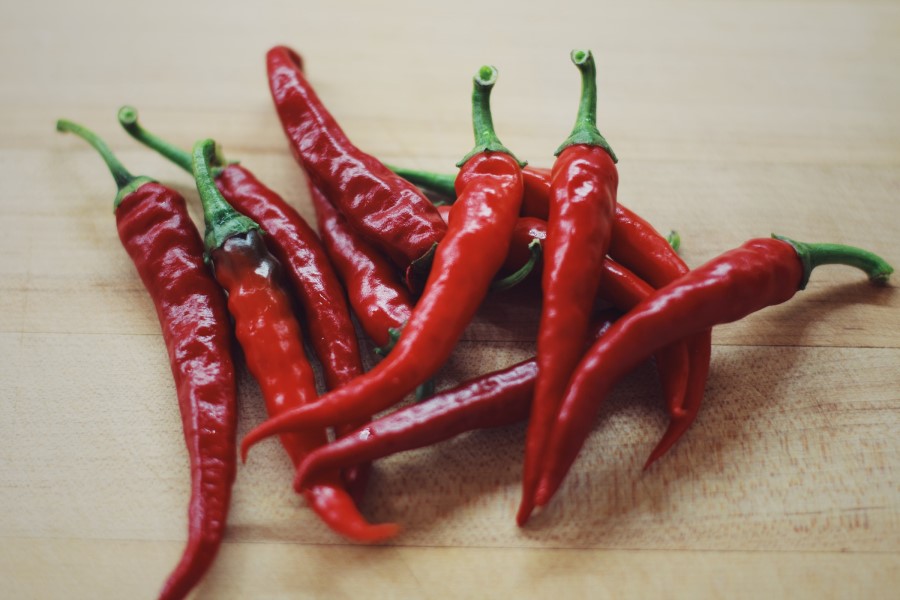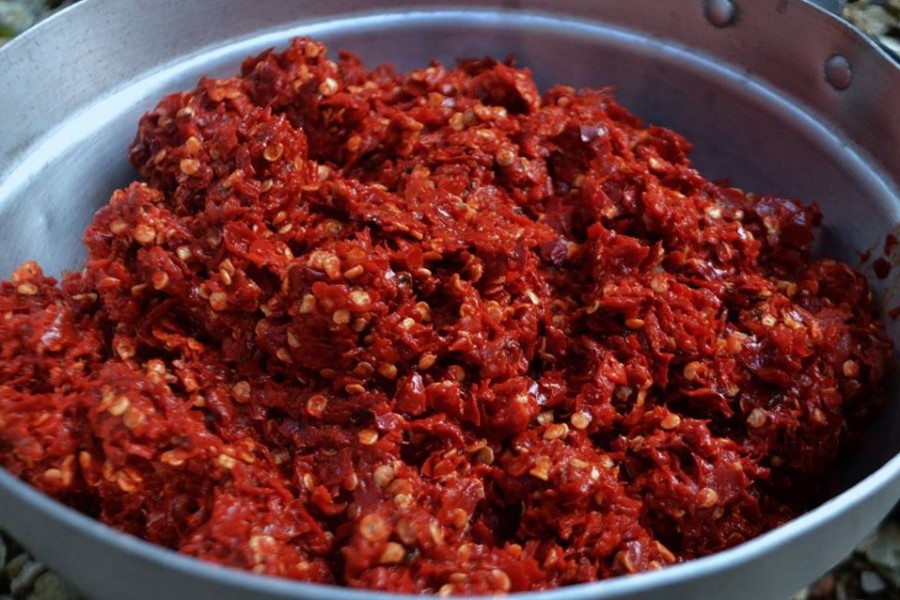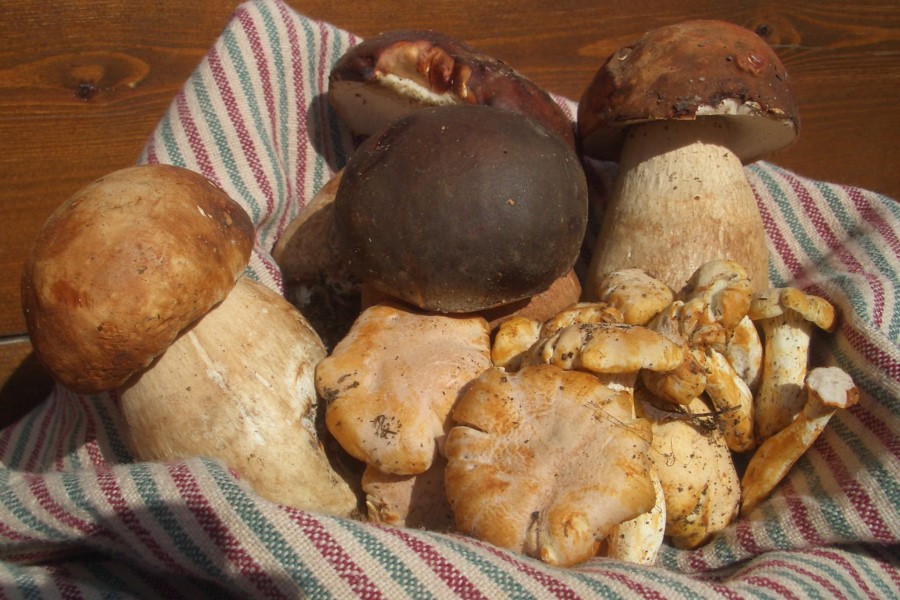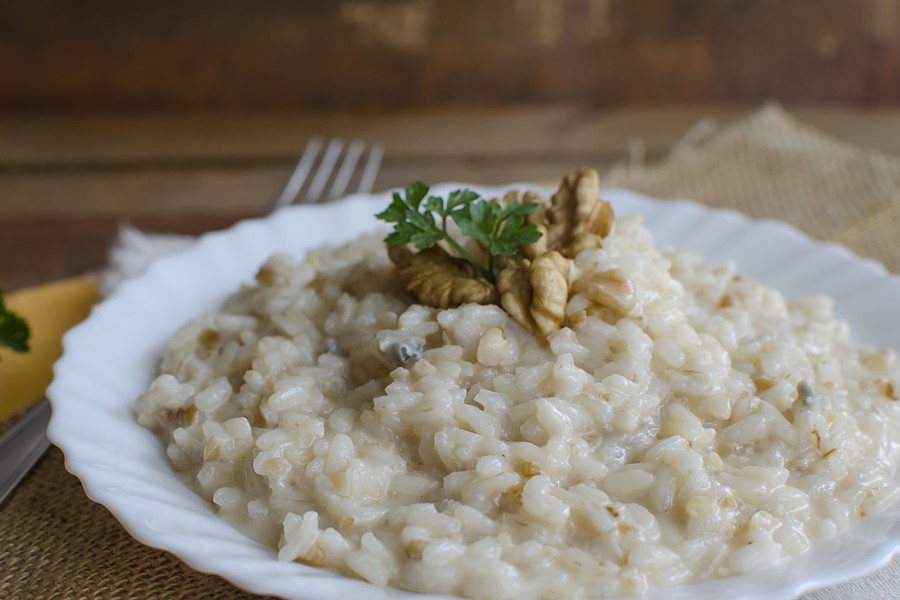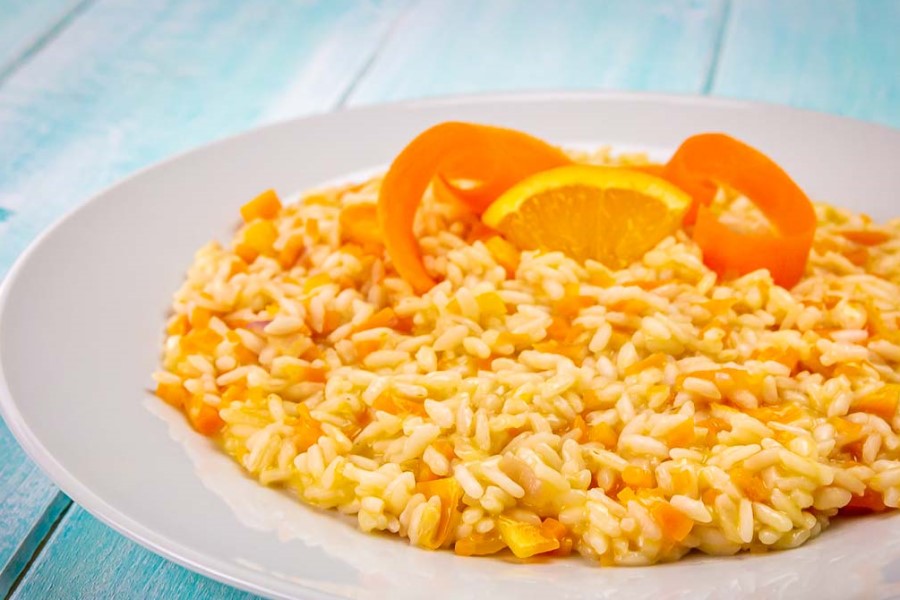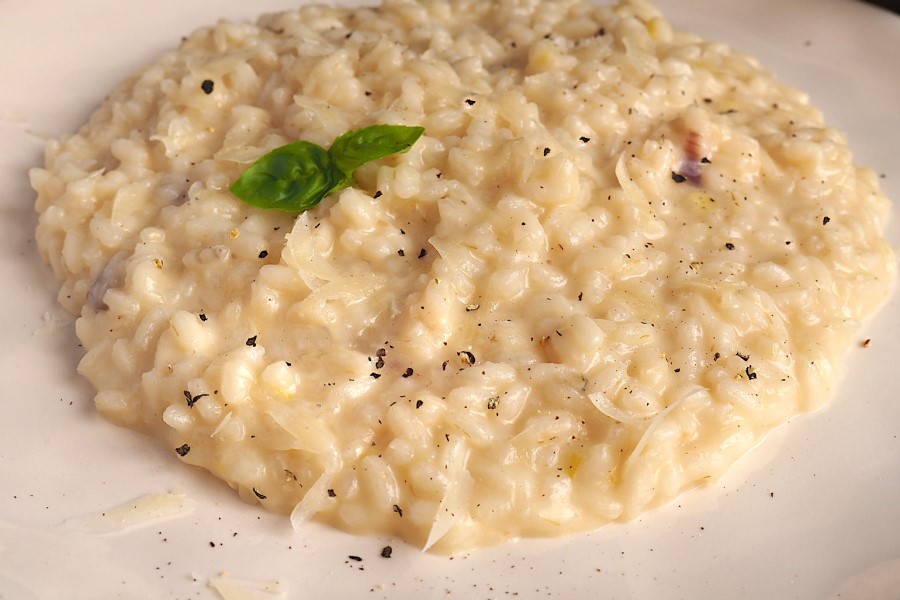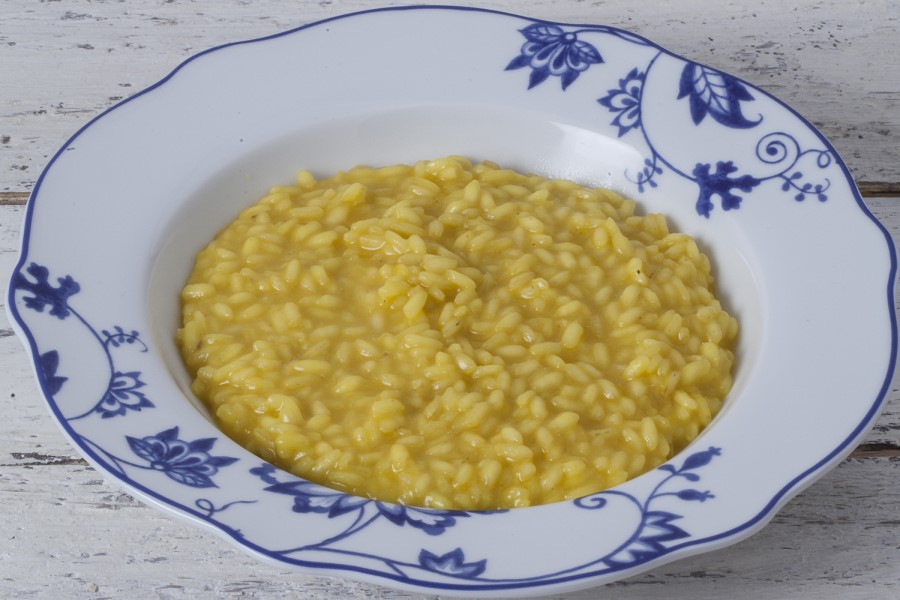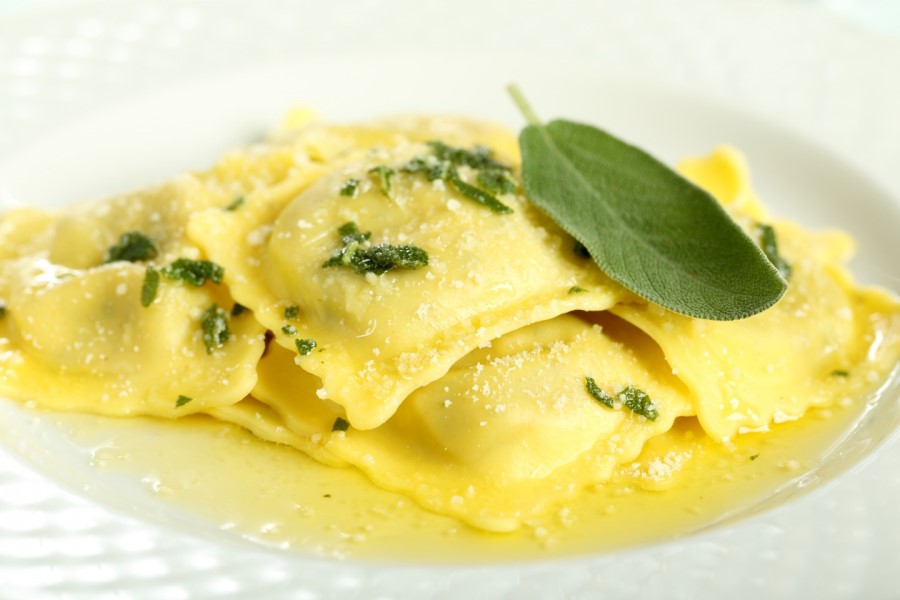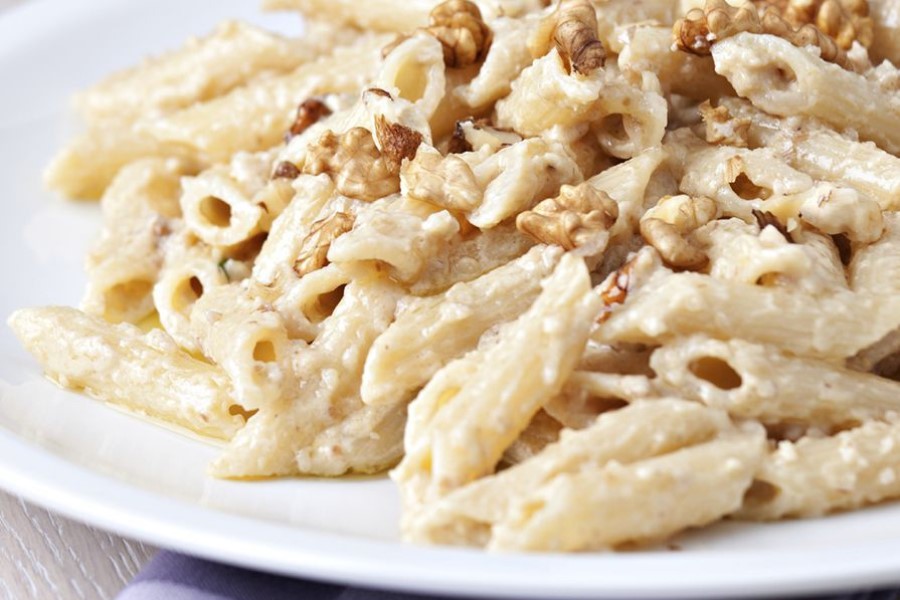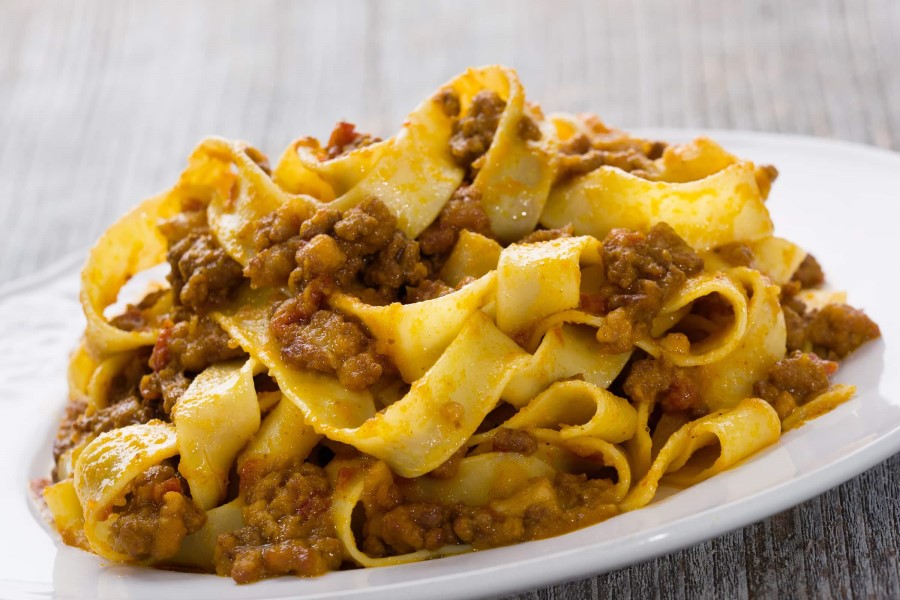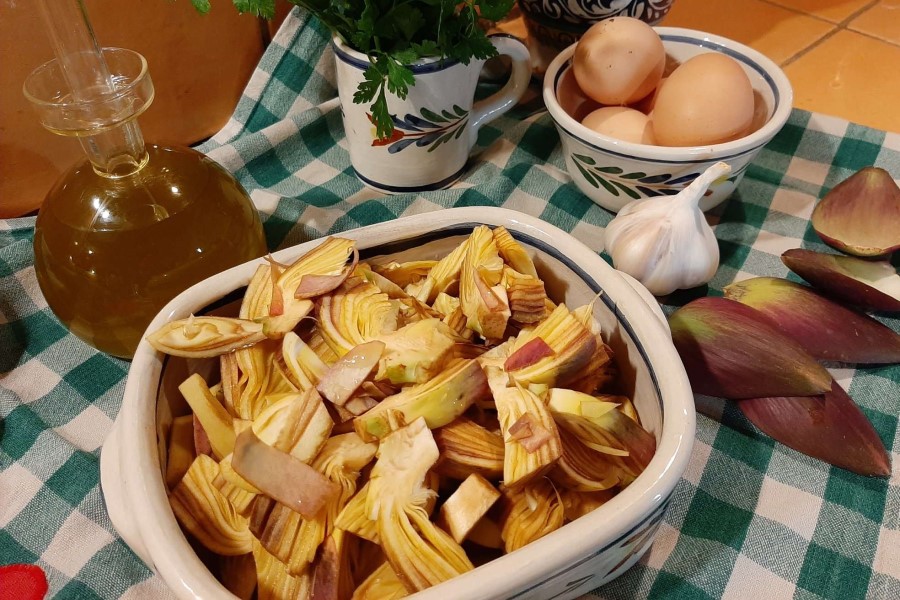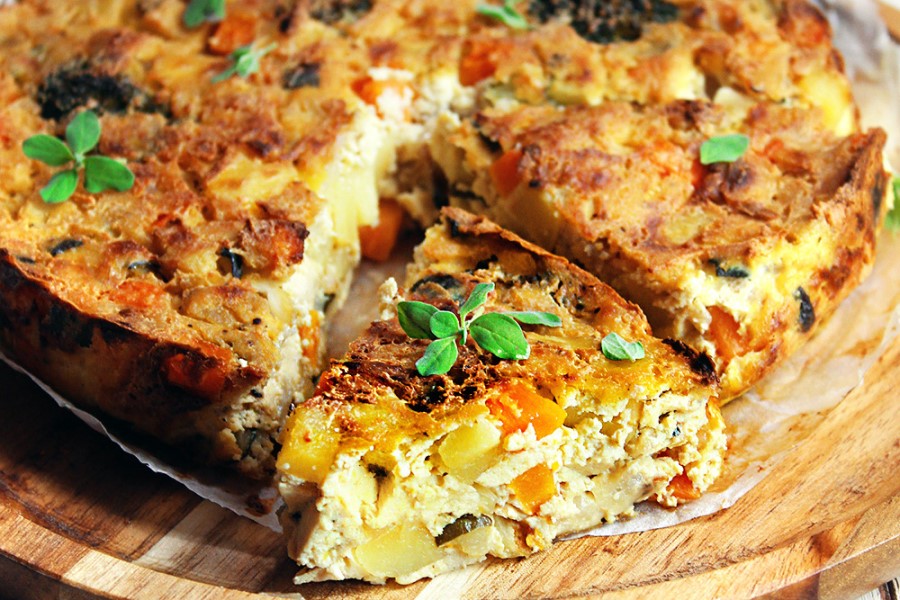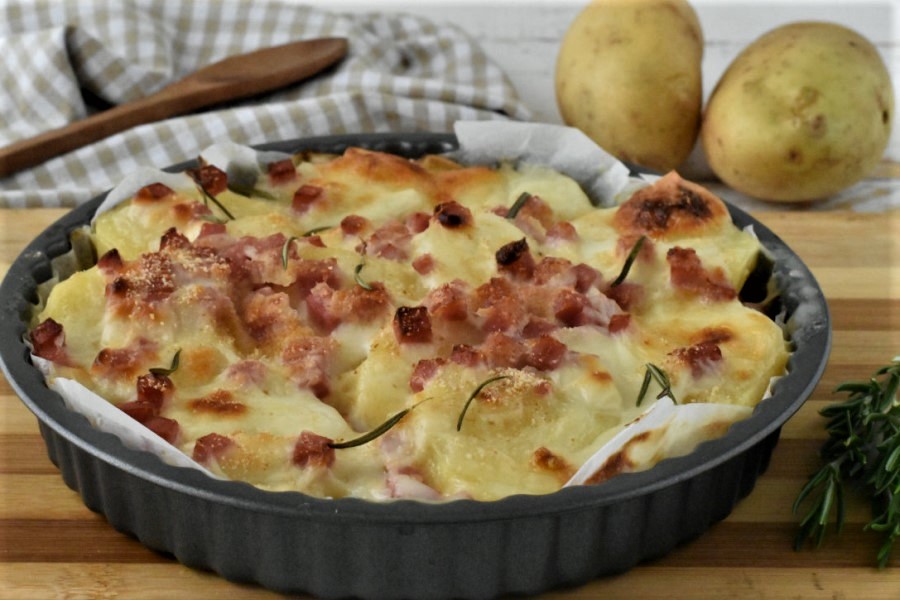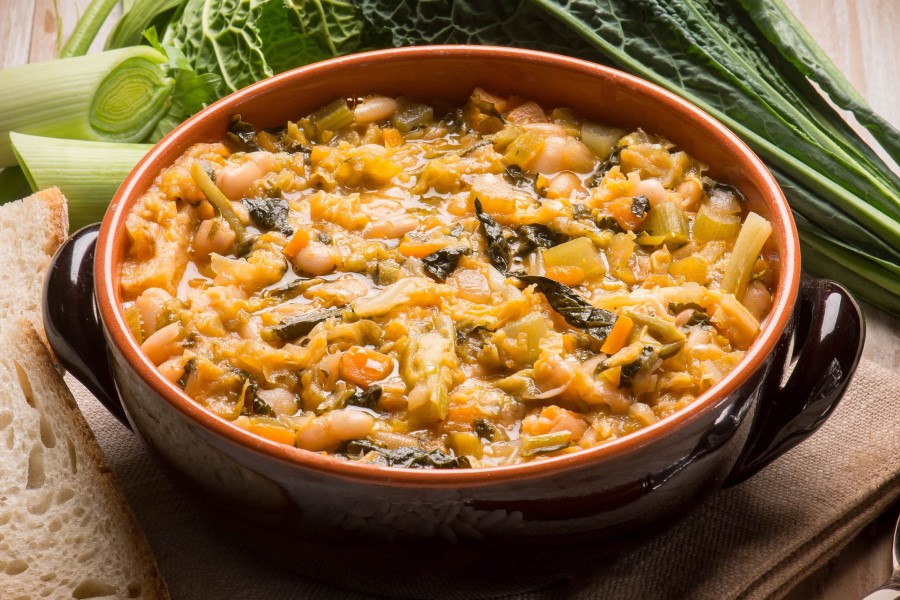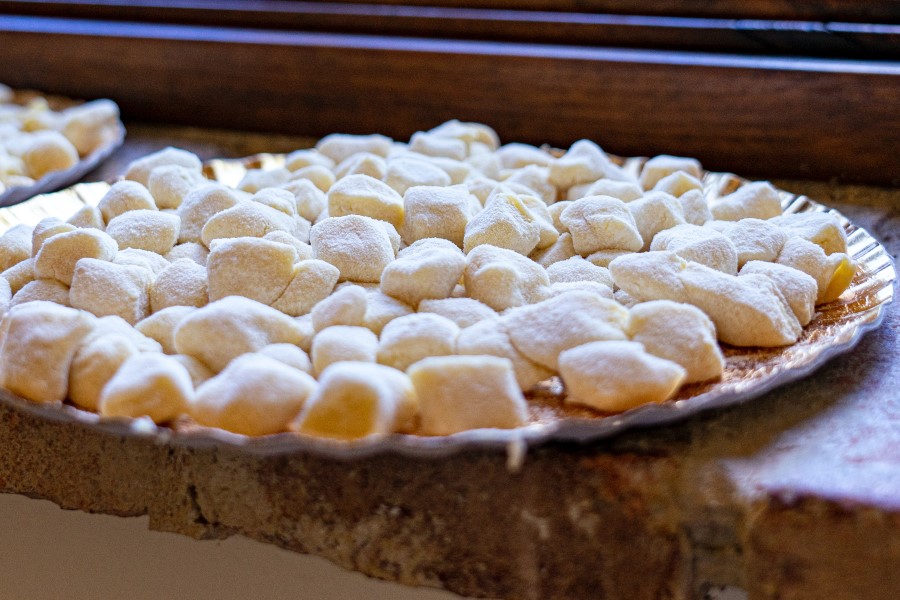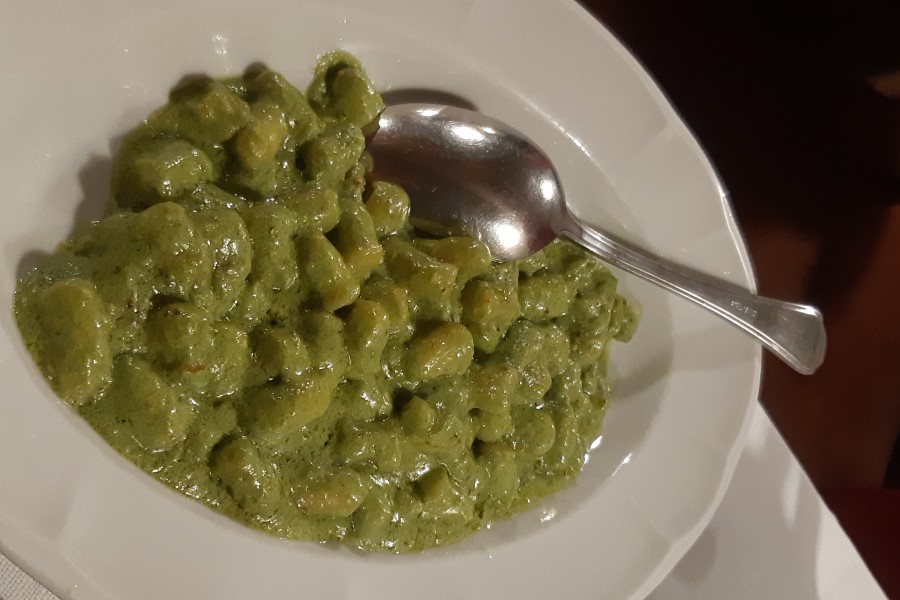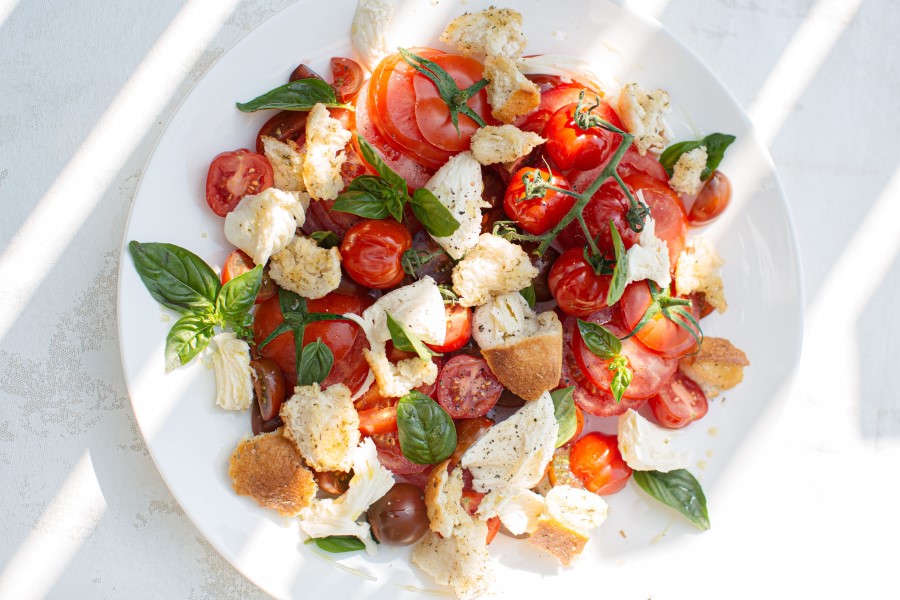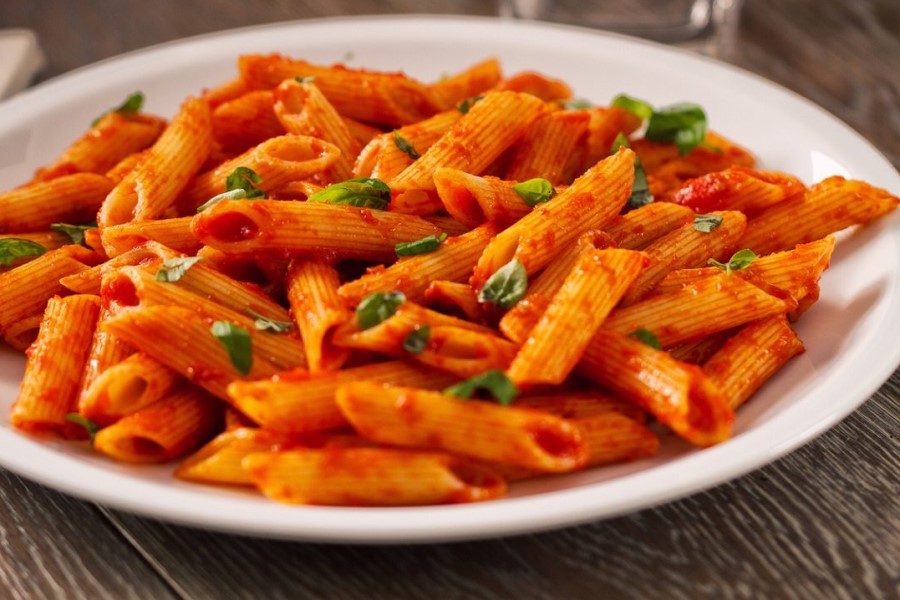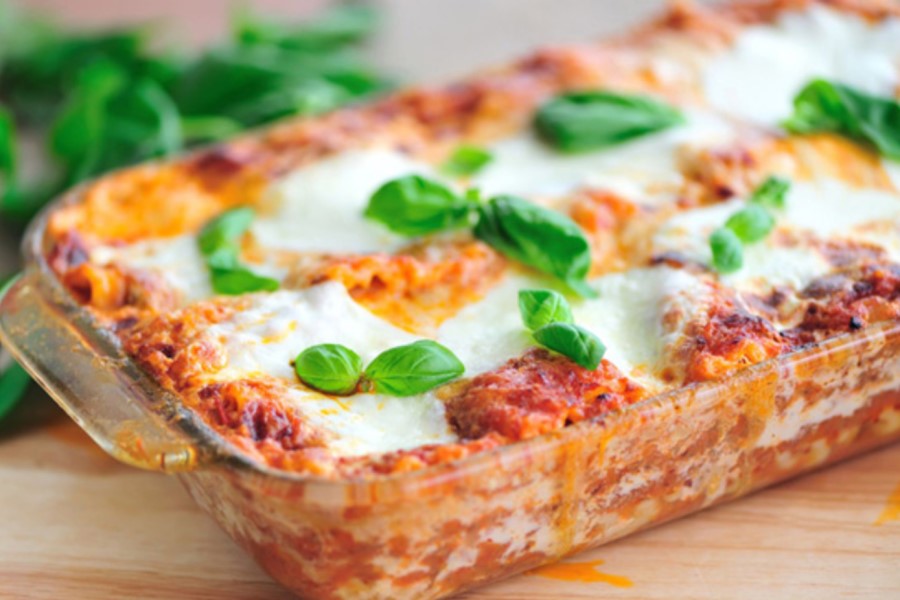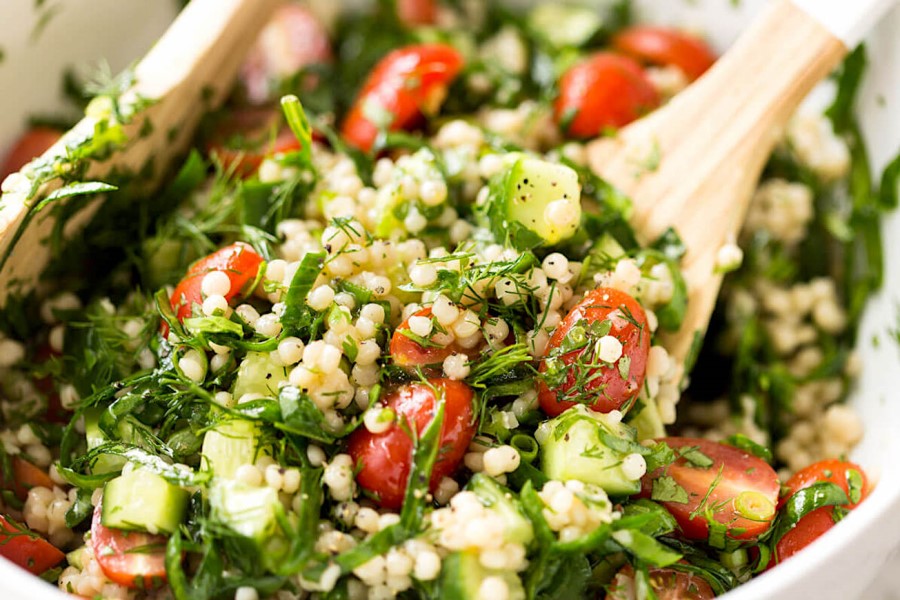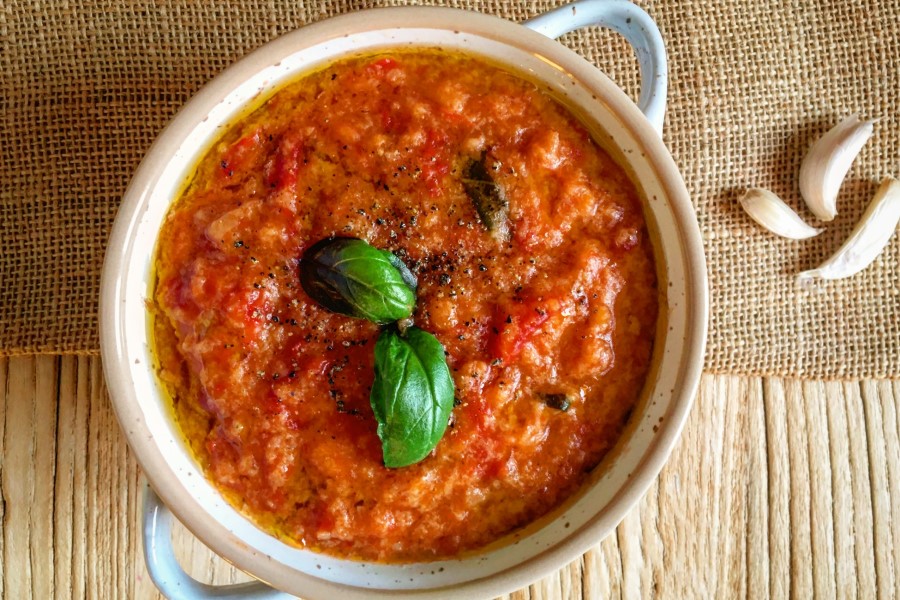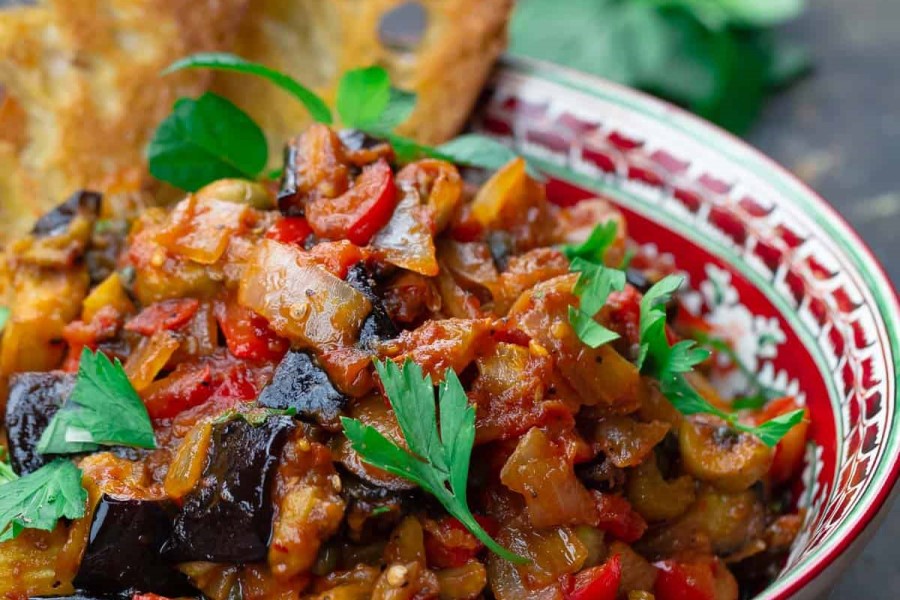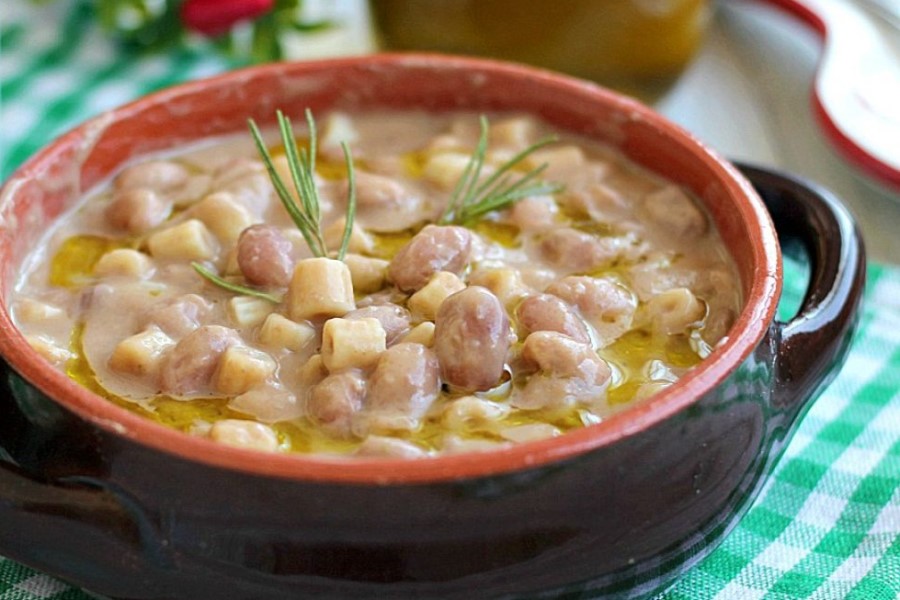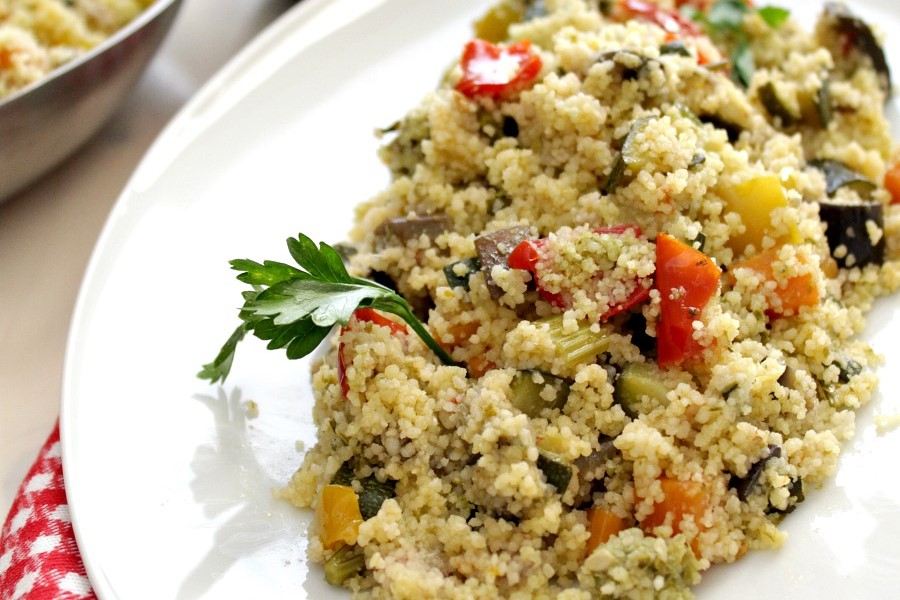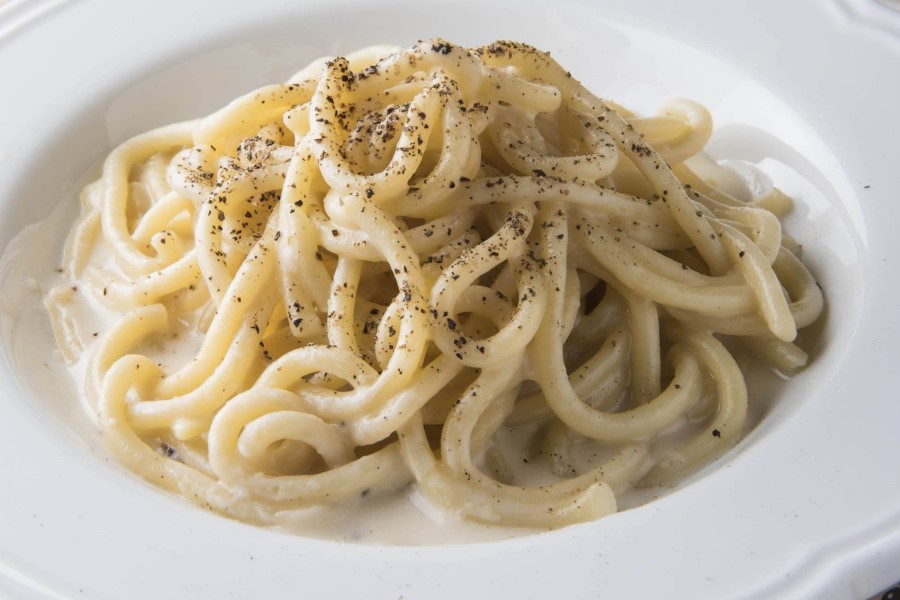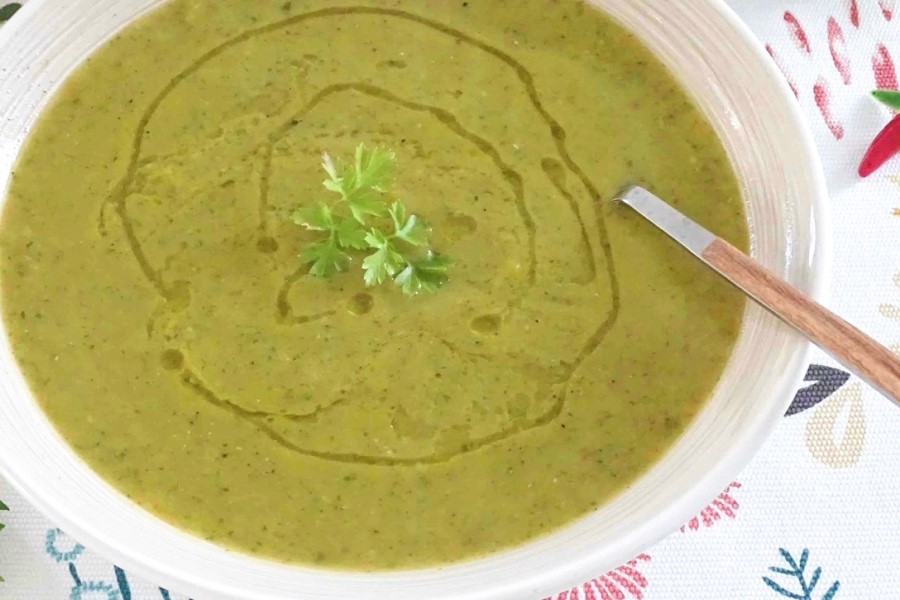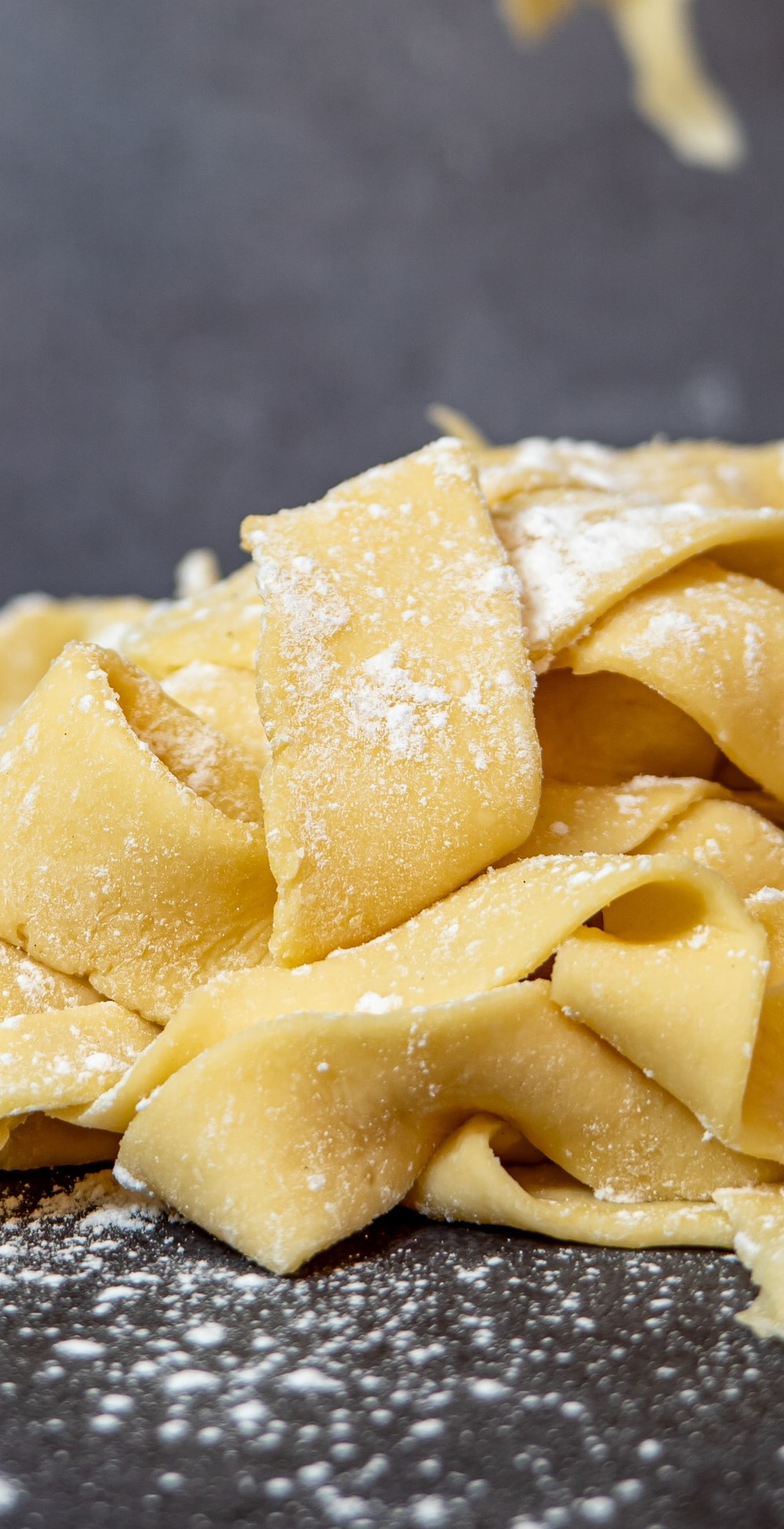
Pasta in Tuscany / Italy
Pasta and Italy, that’s an inseparable marriage. The first choice Mamma has to take when preparing pasta dishes is the pasta-sauce combination. Spaghetti, linguine, penne, fusilli, conchiglie. Each type of pasta has its own bite and absorbs the sauce differently. Therefore, depending on the type of pasta, different proportions of pasta and sauce will get on the fork. Rigatoni go along with pasta alle melanzane, penne with pasta alla boscaiola. Pesto sticks particularly well to the larger linguine. On the other hand, spaghetti are the faithful partners of the creamy pasta alla carbonara. This is of course made with our fresh eggs and no cream at all. Find out more at the table of our restaurant in holiday home Podere Palazzone.
Meat sauces for pasta in Italy
Meat sauce recipes in Tuscany often use classic Tuscan salsiccia. For example, in a tomato or mushroom sauce. Minced meat is also popular, such as in the Tuscan ragù al finocchietto. Pork bacon, on the other hand, goes into the spaghetti all’amatriciana.
Vegetarian recipes from Tuscany
The starter in our restaurant is often vegetarian. Because fresh vegetables such as aubergines, zucchini, or peperoni are much used in recipes for pasta sauces in Italy. Also beans. They make up the delicious pasta fagioli. Of course, all the vegetables come from our vegetable garden behind the farmhouse. However, the perfect couple is pasta and tomatoes. What could be better than a simple dish of penne with a full-bodied tomato sauce and a few drops of our organic olive oil? This is especially true for our untreated tomatoes, ripened under the Tuscan sun. Because we only pick them when they are really ripe. Red, juicy, tasty and with the typical smell of grass and wet earth. We use raw cherry tomatoes in our summer pasta al sugo crudo. Instead, the long San Marzano tomato are cooked and transformed into tomato sauce. The sugo is processed directly after harvest, some fresh basil added and boiled down in jars. That’s why we can offer the full aroma and taste of the best tomatoes in our pasta dishes all year round.
Spiciness to your heart’s content
Those who like spiciness usually adore spaghetti alla puttanesca. We serve it with our homemade pepperoncino-pesto in different degrees of spiciness. This is different types of crashed peppers from our vegetable garden, preserved in olive oil. We recommend a very careful dosing.
Lasagne & Ravioli
The favourite Italian pasta par excellence are probably the lasagne. They come in different variations: With minced meat sauce or meatless with sugo and bechamel. Or, in autumn, with radicchio and with mushrooms. Furthermore, a very tasty recipe is the lasagne al pesto. To prepare pesto you need best olive oil, well-ripened pecorino, fresh basil and roasted seeds. As if made for us! Because all these ingredients are available here in Tuscany in the best quality. In our restaurant we use sunflower seeds for pesto, because of their pleasant nutty flavour. Moreover, they come from local production, too. From our neighbouring region on the coast of Tuscany, the Maremma, we have adopted another speciality, the tortelli Maremmani. These large ravioli filled with ricotta and spinach are best served with butter and crispy fried sage.
Risotto & Co. in the recipes of Tuscany
Durum wheat noodles are not everything Italy’s cuisine has to offer. Indeed, in former times, pasta was made from spelt. This pasta al farro is still used in Tuscan recipes today. Also, the older generation of Pomarance still remembers, that up until the 1970s, on weekdays only polenta was served. Pasta was something exclusive, restricted to Sundays and public holidays. Then people dined in good Sunday clothes at the big dining table with the fine porcelain. Popular alternatives when it comes to starters are also gnocchi made from potatoes. At the Podere Palazzone restaurant we prepare them with delicate cheese sauces, with panna or with a nut sauce. Another typical element of Italian cooking is the risotto. There is no limit to fantasy in the countless risotto recipes. Mostly, they are vegetarian, with vegetables, herbs or different kinds of cheese. The risotto all’arancia is a dish you will surely fall in love with.
Refreshing first courses in Italy
Impossible to imagine Tuscan cuisine without basil. Indeed, in our herb garden it gows excellently. With its strong aroma, it gives every dish a summery freshness. That’s the taste of the Mediterranean. Hence, it is a crucial ingredient in many summer starters, such as the condita. In brief, it is a kind of mixed salad with whatever fresh green and vegetables the kitchen garden offers. However, the main thing is lots of fresh basil. In general, salads are a welcome alternative to pasta dishes. How about a couscous salad with crunchy vegetables in summer? Or a pappa al pomodoro, the cold dish made from fresh tomatoes, herbs and bread? The latter is somewhat similar to the panzanella, a bread salad with tomatoes and summer vegetables. To season the salads, in the Podere Palazzone holiday home we use our homemade fruity red wine vinegar.
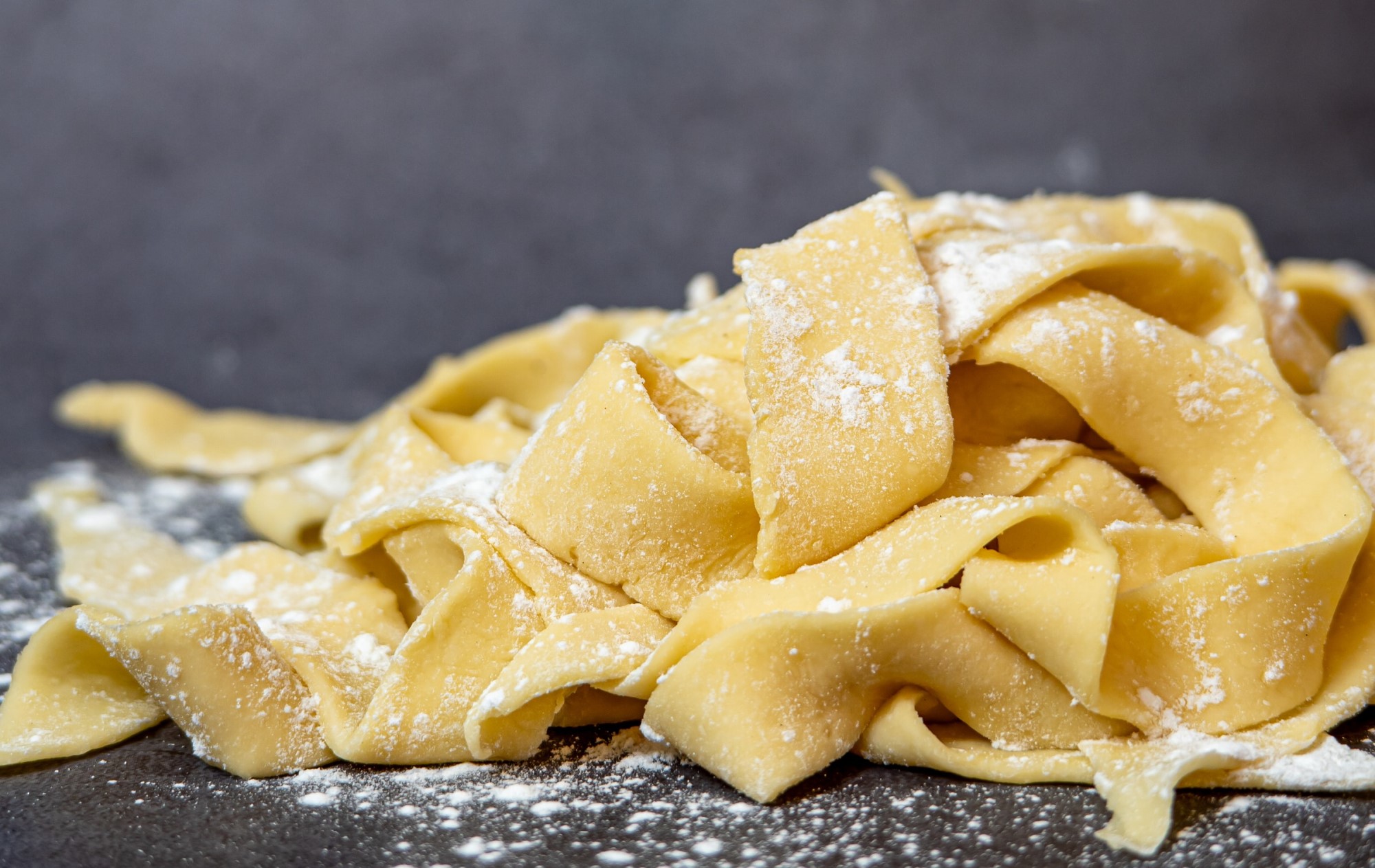
Pasta in Tuscany / Italy
Pasta the way Mamma makes it
Pasta and Italy, that’s an inseparable marriage. The first choice to be taken when preparing pasta dishes is the pasta-sauce combination. Spaghetti, linguine, penne, fusilli, conchiglie. Each type of pasta has its own bite and absorbs the sauce differently. Therefore, depending on the type of pasta, different proportions of pasta and sauce will get on the fork. Rigatoni go along with pasta alle melanzane, penne with pasta alla boscaiola. Pesto sticks particularly well to the larger linguine. On the other hand, spaghetti are the faithful partners of the creamy pasta alla carbonara. This is of course made with fresh eggs from our happy chickens and no cream at all. Find out more at the table of our restaurant in holiday home Podere Palazzone.
Meat sauces for pasta in Italy
Meat sauce recipes in Tuscany often use classic Tuscan salsiccia. For example, in a tomato or mushroom sauce. Minced meat is also popular, such as in the Tuscan ragù al finocchietto. Pork bacon, on the other hand, goes into the spaghetti all’amatriciana.
Vegetarian recipes from Tuscany
The starter in our restaurant is often vegetarian. Because fresh vegetables such as aubergines, zucchini, or peperoni are much used in recipes for pasta sauces in Italy. Also beans. They make up the delicious pasta fagioli. Of course, all the vegetables come from our vegetable garden behind the farmhouse. However, the perfect couple is pasta and tomatoes. What could be better than a simple dish of penne with a full-bodied tomato sauce and a few drops of our organic olive oil? This is especially true for our untreated tomatoes, ripened under the Tuscan sun. Because we only pick them when they are really ripe. Red, juicy, tasty and with the typical smell of grass and wet earth. We use raw cherry tomatoes in our summer pasta al sugo crudo. Instead, the long San Marzano tomato are cooked and transformed into tomato sauce. The sugo is processed directly after harvest, some fresh basil added and boiled down in jars. That’s why we can offer the full aroma and taste of the best tomatoes in our pasta dishes all year round.
Spiciness to your heart’s content
Those who like spiciness usually adore spaghetti alla puttanesca. We serve it with our homemade pepperoncino-pesto in different degrees of spiciness. This is different types of crashed peppers from our vegetable garden, preserved in olive oil. We recommend a very careful dosing.
Lasagne & Ravioli
The favourite Italian pasta par excellence are probably the lasagne. They come in different variations: With minced meat sauce or meatless with sugo and bechamel. Or, in autumn, with radicchio and with mushrooms. Furthermore, a very tasty recipe is the lasagne al pesto. To prepare pesto you need best olive oil, well-ripened pecorino, fresh basil and roasted seeds. As if made for us! Because all these ingredients are available here in Tuscany in best quality. In our restaurant we use sunflower seeds for pesto, because of their pleasant nutty flavour. Moreover, they are of local production, too. From our neighbouring region on the coast of Tuscany, the Maremma, we have adopted another speciality, the tortelli Maremmani. These large ravioli filled with ricotta and spinach are best served with butter and crispy fried sage.
Risotto & Co. in the recipes of Tuscany
Durum wheat noodles are not everything Italy’s cuisine has to offer. Indeed, in former times, pasta was made from spelt. This pasta al farro is still used in Tuscan recipes today. Also, the older generation of Pomarance still remembers, that up until the 1970s, on weekdays only polenta was served. Pasta was something exclusive, restricted to Sundays and public holidays. Then people dined in good Sunday clothes at the big dining table with the fine porcelain. Popular alternatives when it comes to starters are also gnocchi made from potatoes. At the Podere Palazzone restaurant we prepare them with delicate cheese sauces, with panna or with a nut sauce. Another typical element of Italian cooking is the risotto. There is no limit to fantasy in the countless risotto recipes. Mostly, they are vegetarian, with vegetables, herbs or different kinds of cheese. The risotto all’arancia is a dish you will surely fall in love with.
Refreshing first courses in Italy
Impossible to imagine Tuscan cuisine without basil. Indeed, in our herb garden it gows excellently. With its strong aroma, it gives every dish a summery freshness. That’s the taste of the Mediterranean. Hence, it is a crucial ingredient in many summer starters, such as the condita. In brief, it is a kind of mixed salad with whatever fresh green and vegetables the kitchen garden offers. However, the main thing is lots of fresh basil. In general, salads are a welcome alternative to pasta dishes. How about a couscous salad with crunchy vegetables in summer? Or a pappa al pomodoro, the cold dish made from fresh tomatoes, herbs and bread? The latter is somewhat similar to the panzanella, a bread salad with tomatoes and summer vegetables. To season the salads, in the Podere Palazzone holiday home we use our homemade fruity red wine vinegar.



